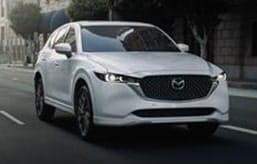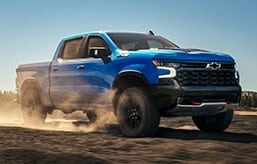- New GTS models debuts for 2022
- Increased performance over the 911 Carrera S
- Lower price than the 911 Turbo
- Part of the eighth 911 generation introduced for 2020
The 2022 Porsche 911 Carrera GTS and Targa 4 GTS Prove That Little Changes Add Up to a Lot
What is the 911?
Like a family of bunnies in springtime, the latest-generation Porsche 911 lineup continues to multiply. Porsche brought out the redesigned Carrera and Carrera S for 2020, the Turbo for 2021, and now the GT3 and GTS for 2022. As with prior iterations of the 911 GTS, this new model fills the gap between the Carrera S and the Turbo in regards to performance and price. And there's not just one GTS bunny — there's a bunch of them! You can get the GTS-spec as a Carrera coupe, Carrera convertible or Targa 4. Porsche offers all-wheel drive on the coupe and convertible too. The Targa 4 GTS has all-wheel drive as standard.
What's under the 911 GTS' hood?
Like the Carrera and Carrera S, the GTS is powered by a rear-mounted turbocharged 3.0-liter flat-six engine. It produces 473 horsepower and 420 lb-ft of torque — an increase of 30 hp and 30 lb-ft compared to the Carrera S. Porsche says the extra boost is good for a 0-60 mph time of 3.1 seconds in the all-wheel-drive model with Porsche's dual-clutch automatic transmission (PDK). A Carrera S in the same configuration is estimated by Porsche to hit 60 mph in 3.4 seconds. Buyers looking for a classic sports car driving experience will find that the throws for the seven-speed manual — a no-cost option on all GTS models — have been shortened 10 millimeters for quicker shifting.
What else makes the GTS special?
GTS upgrades don't stop with the additional engine output, of course. These models also borrow the 911 Turbo's more powerful brakes and come with unique tuning to the adaptive suspension module (Porsche's PASM). The suspension on coupe and Cabriolet models uses new helper springs on the rear axle to improve handling. The sport exhaust is also specific to the GTS, and the note should be more noticeable thanks to a decrease in sound insulation.
Purists might want to further spec the Lightweight package, which shaves 55 pounds off the weight of the car to give drivers an extra edge on track. It replaces the luxurious standard seats with carbon-fiber buckets, removes the rear seats entirely, swaps in a lighter weight battery and uses a lighter glass for the side and rear windows. The Lightweight package also adjusts the tuning for the rear wing. Combined with the GTS model's updated underbody aero, the rear wing increases the car's downforce at lower speeds. The final change is the addition of rear-axle steering (available as a stand-alone option as well). For those that find the carbon-fiber buckets too stiff or upright, Porsche will offer 18-way power-adjustable sport seats, though there is a weight penalty.
How does the GTS drive?
In short, fantastic. The driving experience isn't wholly changed from piloting the Carrera S. Instead, it feels as if Porsche just dialed everything up a click or two. It's a little more powerful, a little leaner and a little sharper in a corner. The Carrera GTS we drove was equipped with a manual transmission and the Lightweight package. The thinner windows and lack of a back seat in the Carrera GTS really open up the sound coming from the rear-mounted flat-six engine, giving the car slightly more raw appeal than a standard Carrera.
The GTS' acceleration also felt a little quicker at low rpm. While that's plenty useful when passing on the highway or moving through city traffic, it really helps on winding roads. The GTS is strong and sure-footed, with gobs of traction and excellent midcorner stability. All-wheel-drive models like the Targa 4 feel even quicker. Nail the gas and the rear end squats down on the rear tires, giving you plenty of grip and encouraging you to dip your right foot even farther toward the floor.
The rear-axle steering helps here too. At low speeds, the rear wheels slightly turn out of phase with the front wheels, reducing the turning radius so the car is easy to park or maneuver in tight spaces. At higher speeds, the wheels turn in the same direction. That makes it both more stable at speed and sharper through a corner. The combination of performance and practicality makes rear-axle steering a must-have option.
Porsche engineers have done a great job of tuning the suspension, balancing performance and comfort without going too far in either direction. The ride is sporty, but it's not so firm that it's back-breaking. The car corners flat and stays true over imperfect pavement. The adaptive suspension settles down on the highway too, making it a comfortable cruiser and an excellent daily driver, though Porsche expects GTS drivers to spend significantly more time on curvy roads than other Carrera or Targa owners.
As with most Porsches, steering feel and feedback are world-class. You have a great sense of what the front tires are doing. Without the weight of an engine over the front axle, the steering feels direct and quick without being too heavy. The steering wheel itself is smaller than the standard Carrera's, and the standard Sport Chrono performance package includes a small drive mode dial on the inside of the spokes. On PDK cars, there's a small Sport Response button on the dial. It puts the car in the most aggressive performance setting for a few seconds. Think of it like a Turbo button on an old video game. One press and you'll know just what we mean.
Edmunds says
Do you find yourself staying up late at night fiddling around on Porsche's online configurator? After innumerable permutations, do you say to yourself: "You know, the regular Carrera and Carrera S are too boring but, dang, I just can't afford to get the 911 Turbo." Well, here's Porsche with the 2022 GTS as a solution to your dilemma. The GTS' on-road driving experience is only subtly different from the Carrera S', but that's largely the point. Porsche is a master of filling every niche.



 by
by